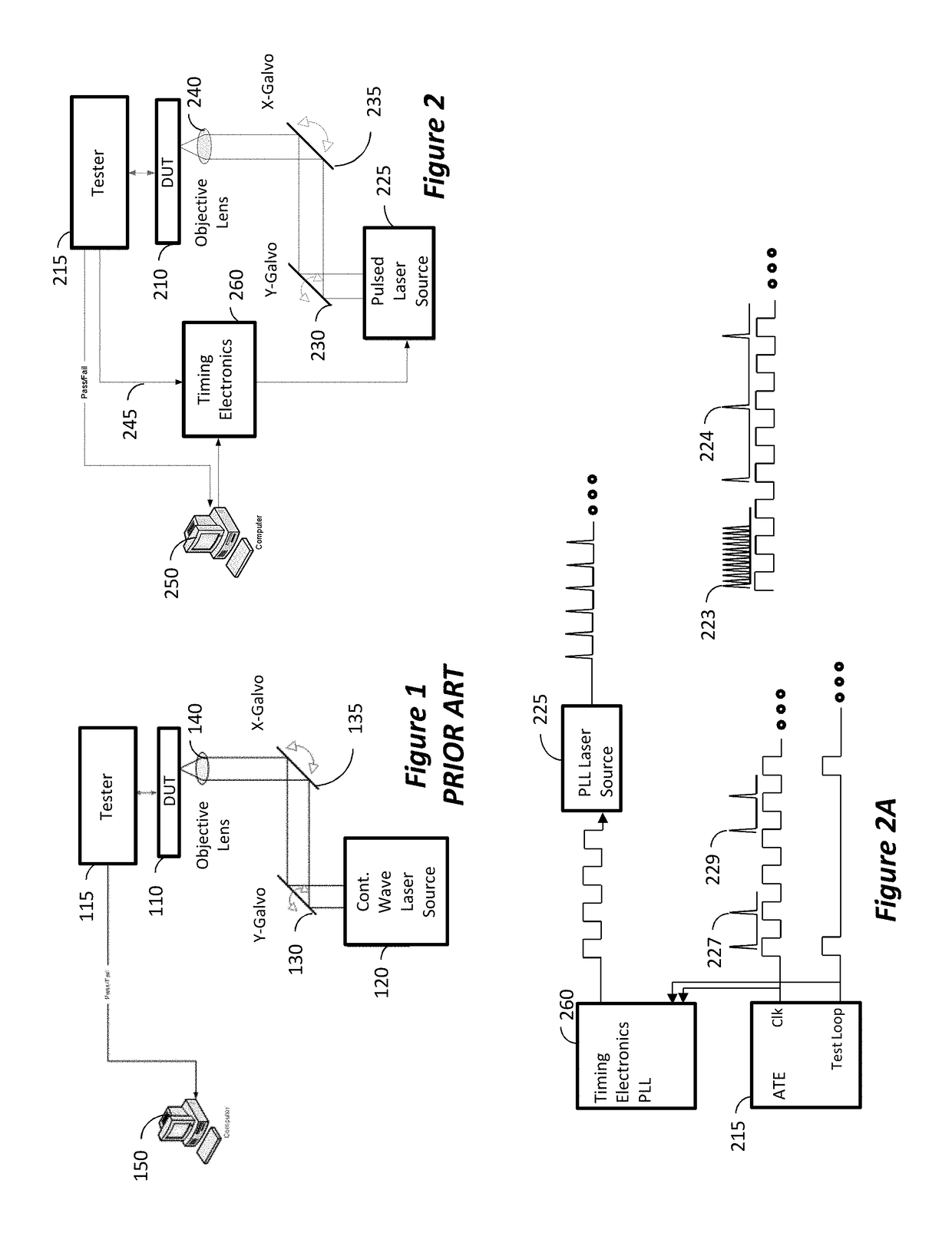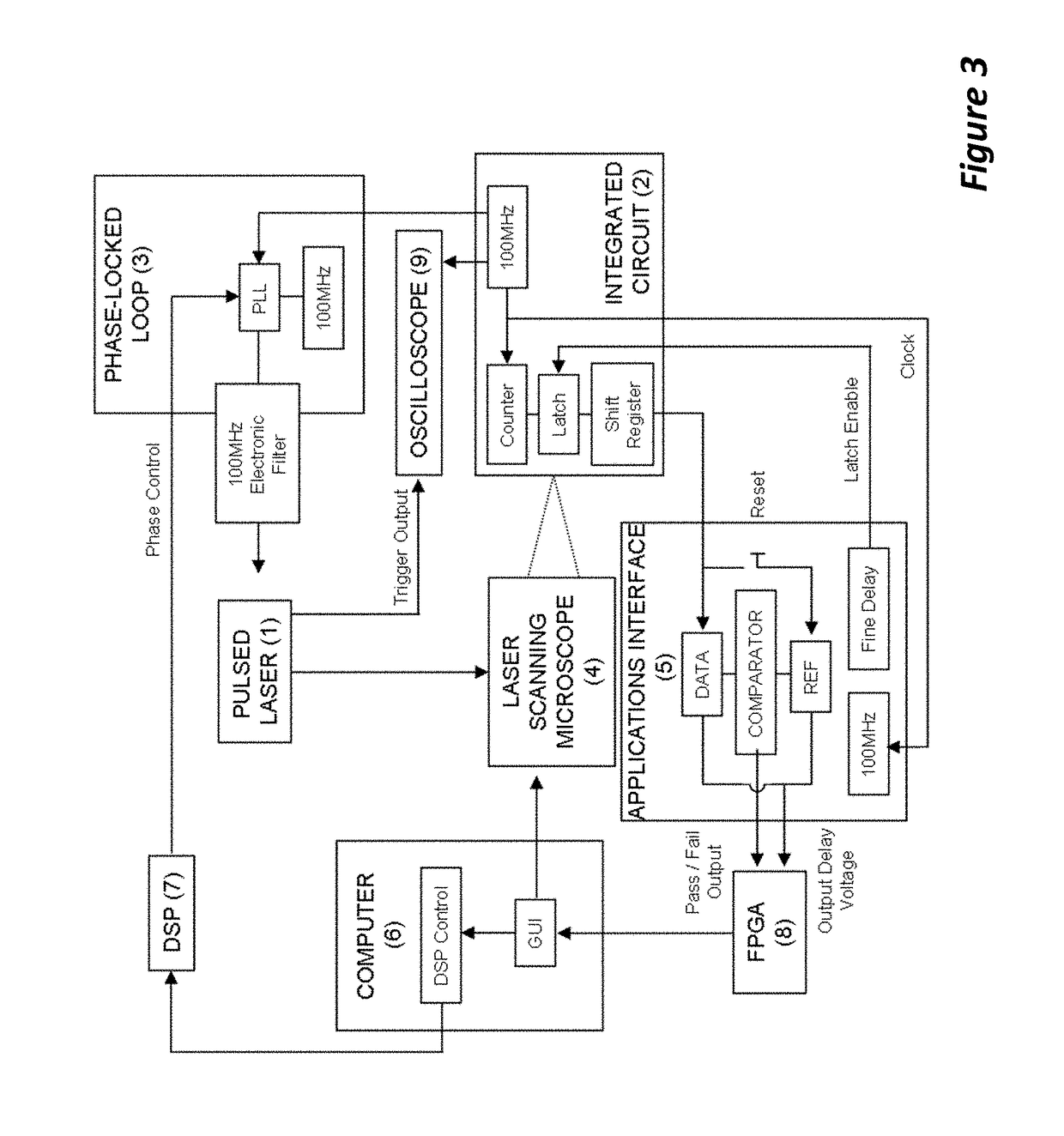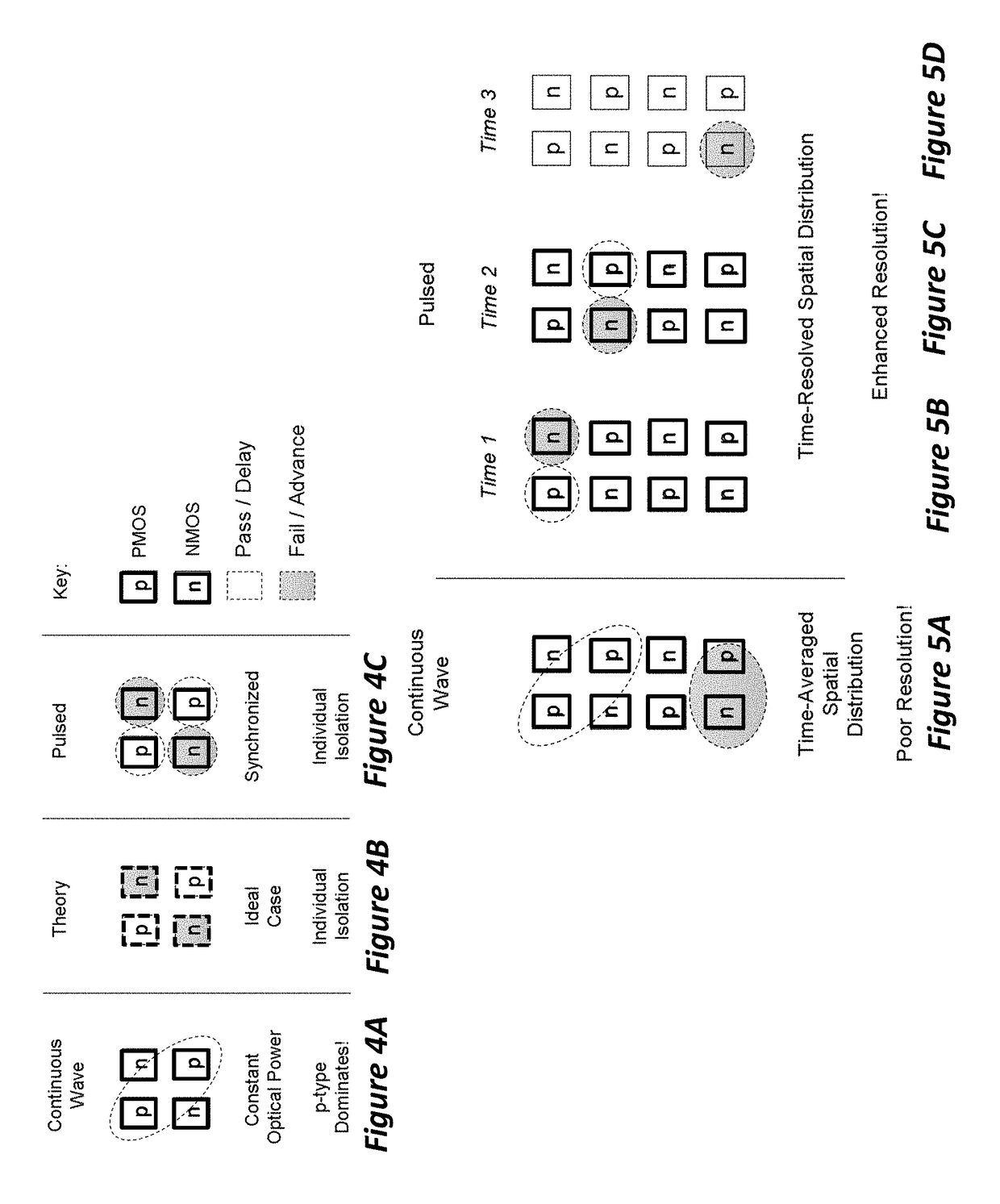Synchronized pulsed LADA for the simultaneous acquisition of timing diagrams and laser-induced upsets
a timing diagram and laser technology, applied in the direction of contactless circuit testing, electronic circuit testing, etc., can solve the problem that the spatial resolution of the single photon lada cannot be improved by the use of smaller wavelength lasers, and the use of shorter wavelengths is limited, so as to achieve enhanced spatial resolution, high spatial resolution of fault localization, and sufficient energy
- Summary
- Abstract
- Description
- Claims
- Application Information
AI Technical Summary
Benefits of technology
Problems solved by technology
Method used
Image
Examples
examples
[0064]Constructing a pulsed LADA system with a pulsed optical source allows for novel aspects of the operating device to be evaluated and measured. When traditional single-photon or alternative two-photon LADA utilize a CW laser, the optical radiation is constantly interacting with the individual transistors with a potentially damaging level of invasiveness. A pulsed LADA methodology, on the other hand, allows the switching characteristics of the individual transistors to be mapped out in as much as two-physical dimensions. Extended pulsed LADA concepts are discussed in detail below.
[0065]Under conventional CW LADA stimulation, device theory and practice informs us that the magnitude of laser-induced device perturbations from a p-type metal-oxide-semiconductor (PMOS) transistor dominates over its n-type (NMOS) neighbor. Since the diameter of the laser beam would cover both the p-type and its neighboring n-type transistors, the resulting spatial resolution is insufficient to distingu...
PUM
 Login to View More
Login to View More Abstract
Description
Claims
Application Information
 Login to View More
Login to View More - R&D
- Intellectual Property
- Life Sciences
- Materials
- Tech Scout
- Unparalleled Data Quality
- Higher Quality Content
- 60% Fewer Hallucinations
Browse by: Latest US Patents, China's latest patents, Technical Efficacy Thesaurus, Application Domain, Technology Topic, Popular Technical Reports.
© 2025 PatSnap. All rights reserved.Legal|Privacy policy|Modern Slavery Act Transparency Statement|Sitemap|About US| Contact US: help@patsnap.com



